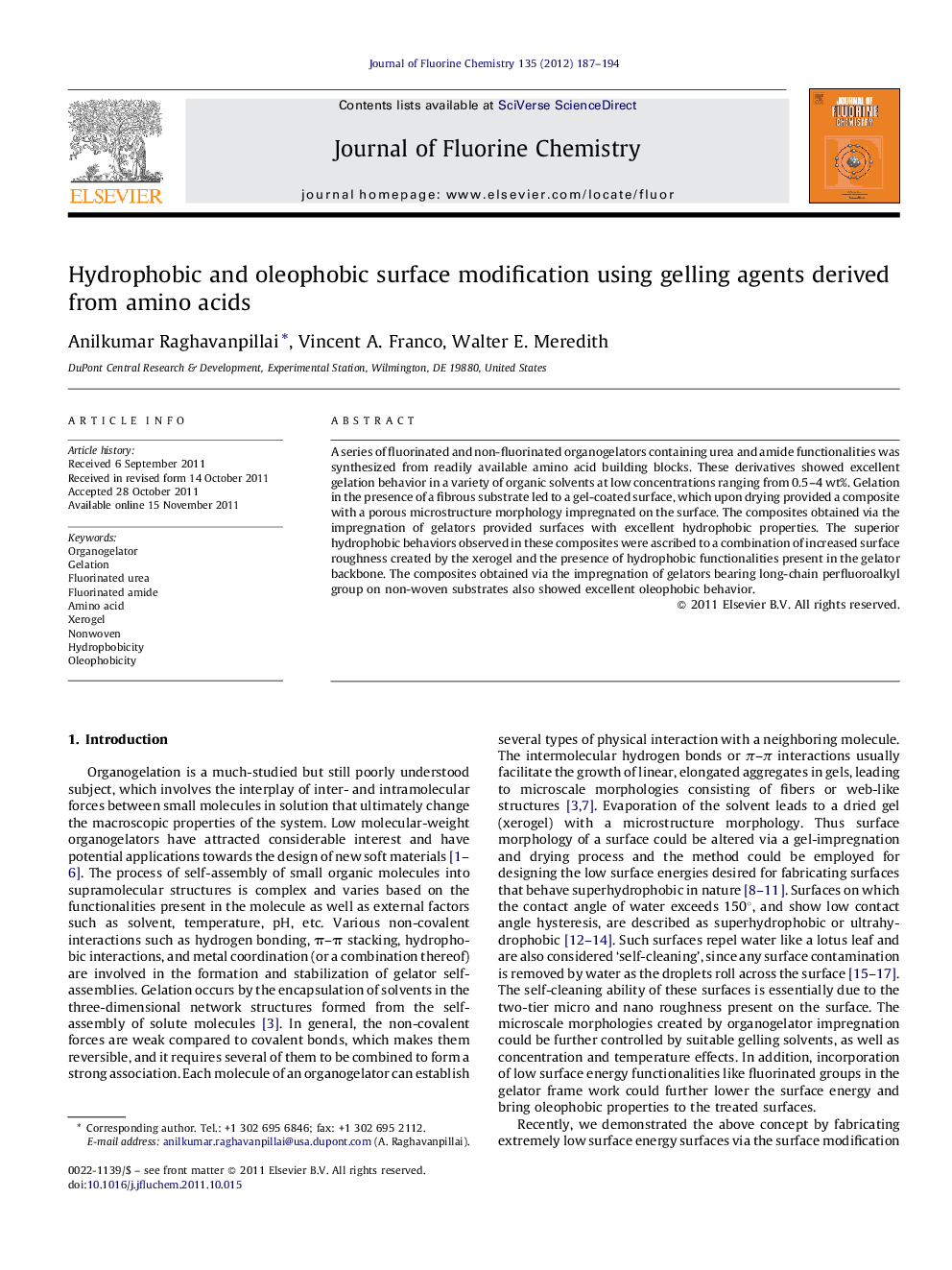| کد مقاله | کد نشریه | سال انتشار | مقاله انگلیسی | نسخه تمام متن |
|---|---|---|---|---|
| 1314727 | 1499365 | 2012 | 8 صفحه PDF | دانلود رایگان |

A series of fluorinated and non-fluorinated organogelators containing urea and amide functionalities was synthesized from readily available amino acid building blocks. These derivatives showed excellent gelation behavior in a variety of organic solvents at low concentrations ranging from 0.5–4 wt%. Gelation in the presence of a fibrous substrate led to a gel-coated surface, which upon drying provided a composite with a porous microstructure morphology impregnated on the surface. The composites obtained via the impregnation of gelators provided surfaces with excellent hydrophobic properties. The superior hydrophobic behaviors observed in these composites were ascribed to a combination of increased surface roughness created by the xerogel and the presence of hydrophobic functionalities present in the gelator backbone. The composites obtained via the impregnation of gelators bearing long-chain perfluoroalkyl group on non-woven substrates also showed excellent oleophobic behavior.
Figure optionsDownload as PowerPoint slideHighlights
► Self-assembly of organogelators was explored for surface modification.
► Urea–amide-based organogelators were synthesized from amino acids.
► Processed outstanding gelation properties in organic solvents at low concentrations.
► Water/oil repellency vs functional variations on the gelator were studied.
Journal: Journal of Fluorine Chemistry - Volume 135, March 2012, Pages 187–194